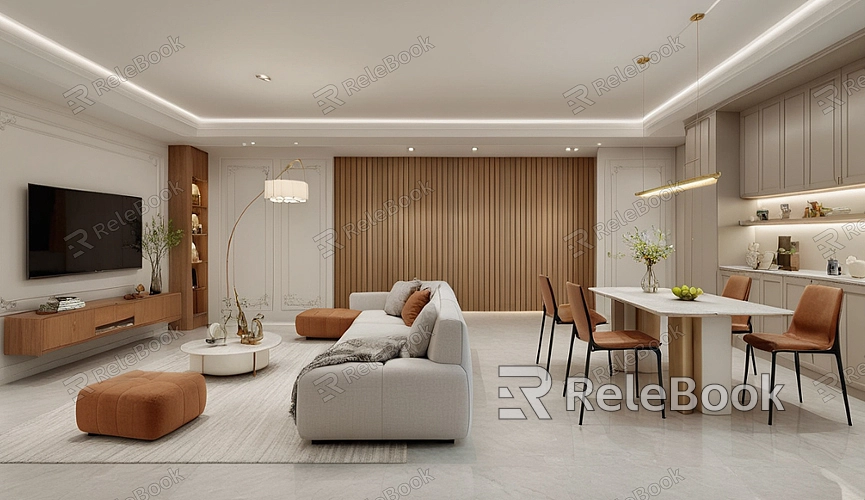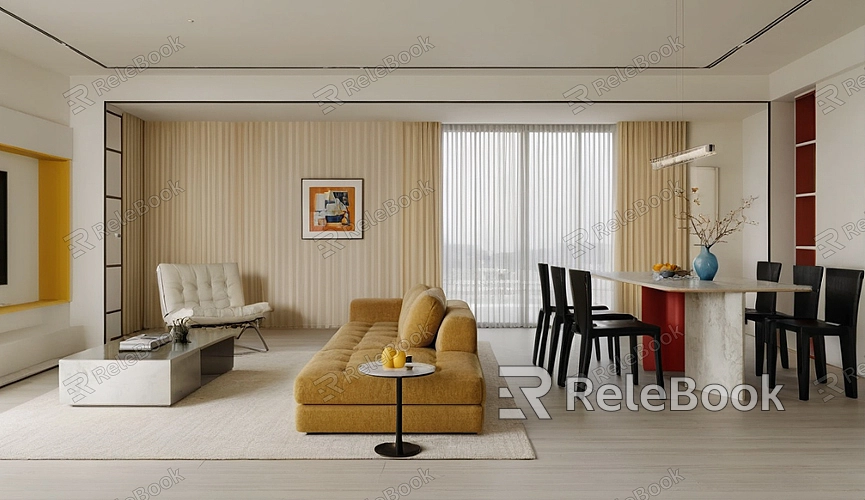How to Import an Image for UV Mapping in Maya?
UV mapping is the process of wrapping a 2D image onto a 3D model's surface, allowing artists to add detail, color, and texture. To make models look more realistic, artists often need to import high-quality images into Maya and apply them to the model's UVs. This process is essential for anyone working in 3D art creation. This article will guide you through the complete steps of importing an image for UV mapping in Maya. Whether you're a beginner or have some experience, this article provides a detailed process to help you master this skill.

Preparation
Before diving into any steps, make sure your model has already been unwrapped with UVs and that you have the required image ready. UV unwrapping is the process of creating a valid 2D layout of a model, which allows you to seamlessly apply an image to the 3D surface of the model. If this step hasn’t been completed, you can use Maya’s UV editing tools to unwrap your model. As for the image, you can use any image editing software to create or modify textures, with common formats being JPEG, PNG, and TGA.
Importing the Image
The process of importing an image for UV mapping in Maya is relatively simple. First, ensure that your model has a proper UV layout and that you're in the right view to edit materials and textures. Here are the steps to import an image:
1. Select the Object
In the scene, select the 3D model you want to apply the UV texture to. Once the model is selected, make sure you're in the correct mode to edit materials and textures.
2. Create a Material
In Maya, textures are typically applied through materials. To import an image, you first need to create a new material:
Open the "Hypershade" window, which is Maya's material editor.
Click on the "Create" button in the top left corner and select the appropriate material type. Commonly used materials are "Lambert" or "Phong," depending on the lighting effects you need.
In the material's settings, find the "Color" property. Click the box next to it to open a file dialog.
3. Import the Image
In the file dialog, click the file icon and navigate to the location of the image you want to apply to your model. Once selected, the image will be loaded as the texture for the material's "Color" property.
4. Apply the Material
To apply the material to your model, right-click on the model in the view window and select "Assign Material." Choose the material you just created, and the image will be automatically applied to the model's UVs.

Adjusting the UV and Image Mapping
After importing the image, you may need to fine-tune the UV mapping and the image itself to ensure that the texture aligns correctly with the model’s surface. This can be done using the "UV Editor." Here's how:
1. Open the UV Editor
In Maya, open the "UV Editor" window, where you can adjust and inspect the UV layout. You can access this from the "UV" menu in the top toolbar.
2. View the UV Mapping
In the UV Editor, you will see the model’s unwrapped 2D layout. Ensure the image is properly mapped onto the UVs. If needed, you can select the UV vertices and move, scale, or rotate them to align the texture more accurately.
3. Adjust Texture Coordinates
If the image looks distorted or stretched on the model, you can adjust the texture coordinates to resolve this. In the UV Editor, select the UV faces and use the "Texture View" option to view and tweak how the texture appears on the model until you are satisfied with the result.
Adjusting Material Properties and Effects
Beyond basic texturing, you may want to adjust other material properties like reflection, transparency, and specularity to create more complex effects. For example:
Reflection: Increase the reflectivity to make the surface appear more metallic.
Specularity: Adjust the material's specular highlights to create different reflections of light on the surface.
Transparency: Add transparency or semi-transparency for materials that need to resemble glass or crystal.
These properties can be found and adjusted in the material settings to achieve the desired effect.
Final Check and Rendering
After completing the texture and material adjustments, it's important to perform a render check. Rendering allows you to see how the texture appears in the final scene. Use Maya’s "Arnold Renderer" or any other rendering engine for a test render. Observe the texture's display and check for any irregularities. Based on the results, you can make further adjustments to the UVs or material settings.
Importing an image for UV mapping in Maya is not a complex task, and with the correct steps, you can add rich details and realism to your models. This article provided a detailed walkthrough from preparation to rendering, helping you complete the texturing process. We hope you can now apply these techniques to your 3D creations. If you're looking for high-quality 3D models and textures, visit Relebook’s website to download the resources you need to enhance your work.
FAQ
Why doesn’t the image show up on my model?
This is often because the material has not been correctly applied to the model or the UV unwrap is incomplete. Check if the UVs are correct, ensure the material is applied, and confirm that the image file path is valid.
How can I fix texture stretching issues?
Texture stretching typically occurs when the UV unwrapping is uneven. You can use the UV Editor to adjust the UV faces' proportions or re-unwrap the model to ensure a smooth texture application.
How can I optimize performance when importing large images?
Large image files can impact Maya's performance. You can reduce image resolution, compress the texture files, or even use texture atlases to combine multiple textures into a single map, reducing memory usage.
How can I import the same image for multiple models?
You can create a material and assign it to multiple models, or use Maya's "Material Instances" feature to reuse the same texture across different objects.

